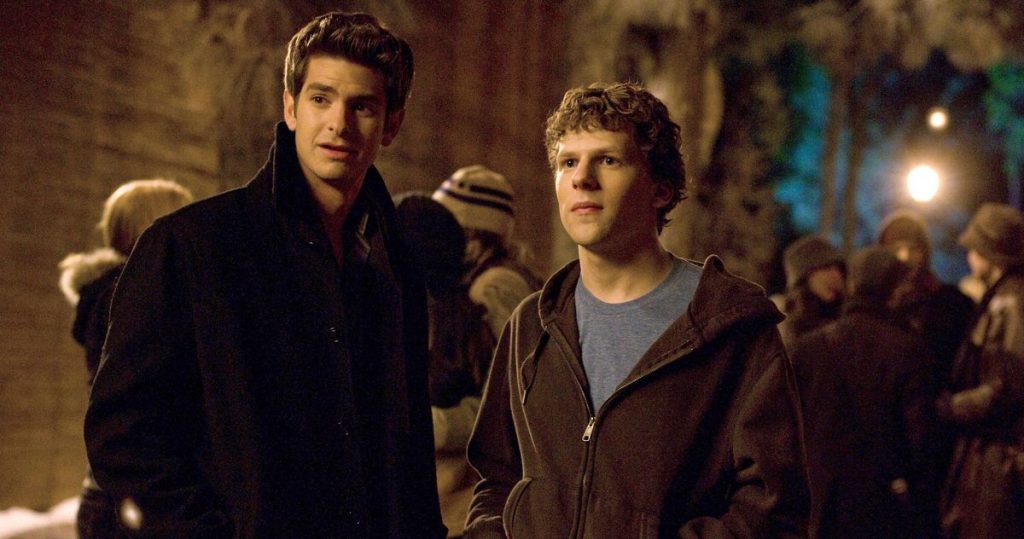The six films in the COLUMBIA CLASSICS 4K ULTRA HD COLLECTION VOLUME 2 are only available on 4K Ultra HD disc within this special limited edition collector’s set. Included with the collection is a gorgeous hardbound 80-page book, featuring in-depth sections about the making of each film within the set via six all-new incisive essays from renowned writers Julie Kirgo, John Kenrick, Glenn Kenny, Michael G. McDunnah, Kayti Burt and Nev Pierce.
In addition, the set also includes an exclusive Blu-ray™ bonus disc featuring 20 short films from the Columbia Pictures library, all presented in high definition. These shorts, curated from over 80 years of the studio’s history, showcase a wide scope of creative output across the worlds of both live-action and animation. From The Three Stooges to award-winning mid-century cartoons to modern favorites from Sony Pictures Animation—along with some surprise rarities—this bonus disc is the perfect complement to this essential classics collection.
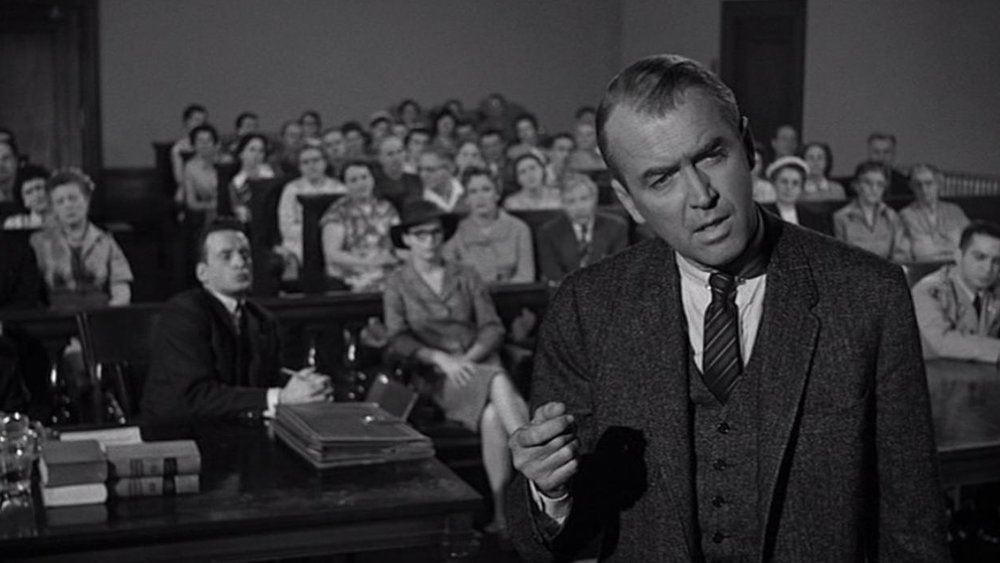
Anatomy Of A Murder (1959)
A riveting courtroom drama is brought to life with an all-star cast in the suspenseful and highly acclaimed ANATOMY OF A MURDER. Nominated for seven Academy Awards® including Best Picture (1959), the film pits a humble small-town lawyer (James Stewart) against a hard-headed big-city prosecutor (George C. Scott). Emotions flare as a jealous army lieutenant (Ben Gazzara) pleads innocent to murdering the rapist of his seductive, beautiful wife (Lee Remick). Produced and directed by the renowned Otto Preminger, the film features a brilliant score by Duke Ellington. Packed with drama, passion and intrigue, ANATOMY OF A MURDER is a cinematic masterpiece that will keep you on the edge of your seat.
The looming Austro-Hungarian-born director Otto Preminger left behind a legacy of films throughout his five decade career which are among the most acclaimed that cinema has to offer, but his masterpiece has to be Anatomy Of A Murder. What might present as a run-of-the-mill courtroom drama is anything but; Preminger used his real-life law degree and his maverick filmic sensibilities to craft a boundary-pushing tale which honored the process of conducting legal proceedings as much as exploring the complex character dynamics. Where many films simply gloss over the particulars of legal defense, Anatomy Of A Murder relishes the opportunity to showcase the inherent drama of conducting research which could make or break your case. Nary a moment lacks a propulsive energy with the whip smart and witty screenplay from Wendell Mayes.
Yet, this story would not leave the indelible mark it does without the titanic performance from Jimmy Stewart, along with Arthur O’Connell and Eve Arden as the familial defense team. Despite being on the same “side,” the trio stand in stark contrast to Lee Remick and Ben Gazzara, the husband and wife who are fighting for a future that seems tragic at best. The team on the prosecution gives the film some extra dynamism in the form of the inimitable George C. Scott in one of his first on screen roles. His slick character is not one to make it easy on Stewart’s Paul Biegler. The unexpected anchor of this tale is Judge Weaver as played by Joseph Welch, a man who in real life had given Joseph McCarthy an earful in his hearings. The judge is critical to this picture as he allows the law to play out in a highly nuanced and reasonable way. This is a film that succeeds in not shortchanging the power of the narrative while respecting the intelligence of the audience. It is a powerful piece of cinema that works just as well today as it ever has.

Oliver! (1968)
Winner of six 1968 Academy Awards® including Best Picture, it’s OLIVER!, the beloved musical version of Charles Dickens’ Oliver Twist. A magnificent screen adaptation of Lionel Bart’s sensational stage musical, OLIVER!, directed by Carol Reed, is the timeless story of a plucky young orphan and his quest for love and happiness in a world populated by rascals, rogues, and thieves. A wondrous blend of drama, comedy, adventure and song, OLIVER! is grand and glorious entertainment the whole family will enjoy.
While there was a point when the cost of producing musicals for the big screen became too cost prohibitive for studios to invest funds in beginning in the late 1950s, they soon changed their tune upon the monumental success of The Sound of Music in 1965. One of the most notable beneficiaries of this success would be the adaptation of the stage musical Oliver! from Lionel Bart, adapted and improved upon by the incredible Carol Reed (The Third Man). While this was not the first time the Charles Dickens story had been told on the big screen, it had never been told with such joy and gusto which left audiences exiting theaters in a state of euphoria. It makes complete sense that a crowd pleaser such as this one would win the Academy Award for Best Picture, a feat a musical would not accomplish for over thirty years until Chicago made a splash.
The joy of Oliver! is not simply that there are so many incredible songs featured throughout this epic story; tunes as varied as “As Long as He Needs Me”, “You’ve Got to Pick a Pocket or Two”, and “Where Is Love?” all stick in your mind for different wonderful and heartbreaking reasons. The true trick to this adaptation is how it is presented on screen. Reed showed in The Fallen Idol how effortlessly he worked with children, and Mark Lester, Jack Wild and the other youth performers never feel secondary to the adults in the ensemble. The unforgettable performances were complemented by a cracking team of crafts people who brought this material to life in such a lush manner. Production Designer John Box created an incredibly detailed environment that leant an authenticity to the narrative, while choreographer Oona White and cinematographer Oswald Morris brought similar excellence to their vocations. Johnny Green provided musical direction for the material which found a subtle balance between the necessary Hollywood spectacle with the gritty Dickensian atmosphere. This film delivers wonder, humor and heart in a superbly executed package.
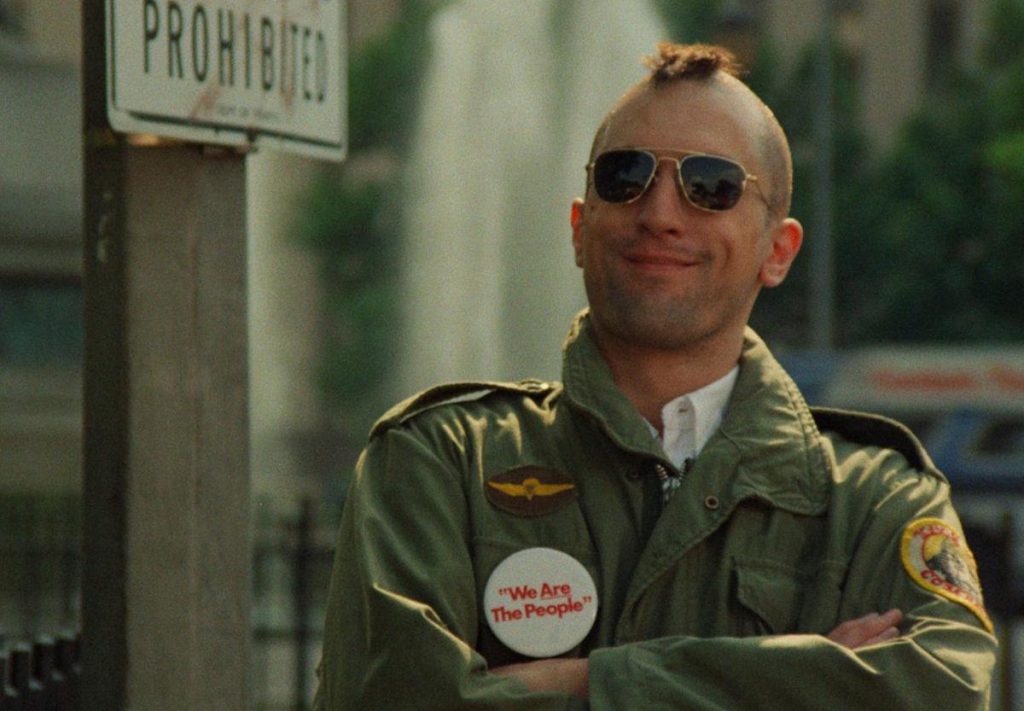
Taxi Driver (1976)
Winner of the prestigious Golden Palm at the Cannes Film Festival (1976) and nominated for 4 Academy Awards® including Best Picture (1976), TAXI DRIVER stars Robert De Niro in Martin Scorsese’s classic film of a psychotic New York cabbie driven to violence by loneliness and desperation. Co-starring Jodie Foster, Albert Brooks, Harvey Keitel, Peter Boyle and Cybill Shepherd.
It is not a new thought for someone to say that Martin Scorsese is one of the greatest filmmakers to ever live, but that does not make it any less true. In a career of undisputed masterpieces, Taxi Driver is a film that places firmly in the pantheon of true works of art. While the film has been co-opted by certain audiences over the years as an exaltation of vigilantism, those who truly take time to delve into the muck and mire of the gritty narrative will be struck by something altogether more philosophical and horrific. Those audiences have just missed the point completely. The character of Travis Bickle is not a character to be admired; he is a racist, a murderer and all around sociopath who attempts to blend into the environments he inhabits to varying degrees of success. When he does manage to do something socially acceptable, it is typically not long before the other shoe drops and his efforts go to hell. Scorsese, Schrader and De Niro have worked to bring a character to the screen who is unflinching, who may be our focal point but is no hero.
It makes sense that people want to take bits of Travis Bickle and shape them into something for their own purposes. De Niro is delivering the performance of a lifetime, and every moment you see him on screen you cannot look away. No matter how much the phrase has permeated popular culture, when he says “You talking to me?” you find yourself holding your breath. It is a work of grotesque beauty the likes of which film rarely sees. He may be a singular force, but his supporting cast members are all playing their various roles to perfection; Cybill Shepherd slowly oscillates between intrigued, perplexed and terrified in this nuanced role; Albert Brooks brings a slight bit of everyman levity to this pressure cooker situation; and Jodie Foster is the “weird” element that tells it like it is while breaking your heart. The work is intentionally alienating and hallucinatory in a way which proves to be massively rewarding as you delve deeper into the text. Thankfully, Scorsese and cinematographer Michael Chapman have crafted a world which welcomes you to come slum it with them. The film is a powerhouse cinematic achievement on every conceivable level.

Stripes (1981)
When quick-witted slacker John Winger (Bill Murray) loses his apartment, girlfriend and job all in one day, he does what any red-blooded American would do: he joins the army and nearly starts WWIII. Directed by Ivan Reitman and also starring Harold Ramis, John Candy and John Larroquette, STRIPES has become one of the most beloved comedies of all time. And that’s the fact, Jack!
The dynamic trio of Ivan Reitman, Harold Ramis and Bill Murray was a nearly unstoppable force with each figure responsible for some of the most memorable comedies in cinema. While the likes of Ghostbusters, Groundhog Day and Animal House may be more widely talked about in some respects, Stripes is an enduring favorite that cemented the comedic trajectory of all involved. Yes, Stripes may be the only film in this set that was not nominated for Best Picture at the Academy Awards, or nominated for any Academy Award for that matter, but it deserves no less respect. This is just a slightly different, more humorous, take on an outsider(s) trying to find their place in the world. Plus, a film that helped put performers such as Judge Reinhold (Beverly Hills Cop), Sean Young (Blade Runner), John Candy (Planes, Trains and Automobiles) and John Larroquette (Night Court) on the map deserves due recognition.
The film is a comedy classic, but it is one that does not get enough recognition for the moments of humanity it deftly weaves into the story. Bill Murray is an inherently funny individual so you find yourself laughing at some of the painful situations in which he finds himself early in the film, showing early signs of the incredible dramatic actor he would prove himself to be. He is a lovable rapscallion throughout the story, but his personal journey is no joke. This culminates in a skillfully executed scene between Murray and the great Warren Oates as Sergeant Hulka that intentionally lacks laughter in favor of something more emotionally impactful. This is still a comedy through and through, and we get loads of quotable lines that endure just as much today as they ever have. People use “Lighten up, Francis” who likely have no idea where it originated. The film goes a bit overboard in the chaotic finale, but in a way that never threatens to ruin the good time. Stripes is a smart, dumb, outrageous and subtle. It’s a wonderful comedy of hilarious contradictions.
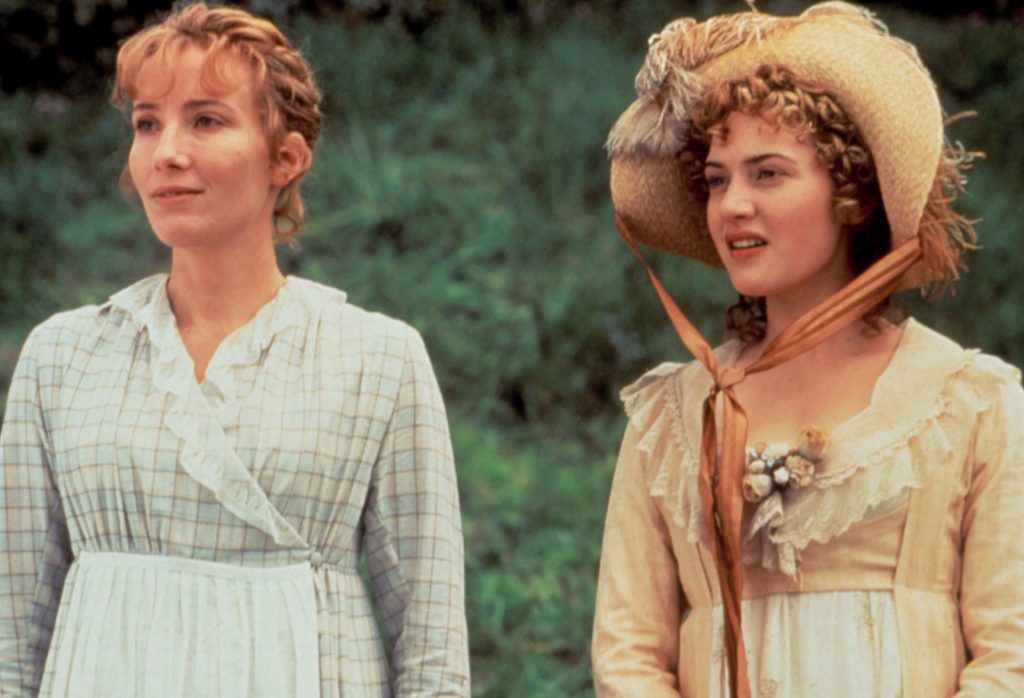
Sense And Sensibility (1995)
Nominated for 7 Academy Awards®, including Best Picture (1995), and directed by Ang Lee. Emma Thompson, Alan Rickman, Kate Winslet and Hugh Grant star in this captivating romantic comedy that swept the Ten Best Lists and was named Best Film at the 1996 BAFTA Awards. Based on Jane Austen’s classic novel, SENSE AND SENSIBILITY tells of the Dashwood sisters, sensible Elinor (Thompson) and passionate Marianne (Winslet), whose chances at marriage seem doomed by their family’s sudden loss of fortune. Rickman, Grant and Greg Wise co-star as the well-intentioned suitors who are trapped by the strict rules of society and the conflicting laws of desire.
It is easy to fall for the misconception that adaptations of Jane Austen novels have always been as ubiquitous as they seem to have been in the past several decades. A writer of her stature looms large now in the culture in stark juxtaposition to the anonymity she shouldered during the time she was alive. If you take a closer look, you see that before the special film that is Sense and Sensibility from 1995 that it had been more than 50 years since any adaptations of Austen’s work had hit the silver screen. In that sense, you have the immense success of this feature to thank for the numerous works that have populated the release calendar in recent memory. It not only kicked off the “craze” with its substantial box office and numerous awards, but it simply one of the best ever to grace the screen. To think this was the first feature screenplay from star Emma Thompson is amazing given the depth and vulnerability she brought out in this material. It may be classic text, but it is no easy feat adapting it into a feature for modern consumption.
The way in which the story nimbly moves between the precarious nature of financial security for women in this time period, and in essence a volley against the patriarchal society which endures today, as well as the universal need for human connection is movingly executed. Yes, there is romantic love, from the culturally stoic Elinor who thinks she must put her heart second to the open-hearted Marianne who must learn to sharpen her instincts when necessary. More importantly, though, is the love between sisters embodied by the lovely chemistry between Thompson and Winslet. These two characters help make each other better and stronger as individuals, each learning traits that get them a bit closer to where they need to be. Each performer in this ensemble is a performer of the highest level of respectability, and each of them deliver some of their finest work here. This was helped in part by the keen direction from Ang Lee, whose vision for this material drew out the best from his performers as well as his crew which captured the lustrous cinematography. While seemingly stuffy on the outside, Sense and Sensibility is bursting with life once you get into it.
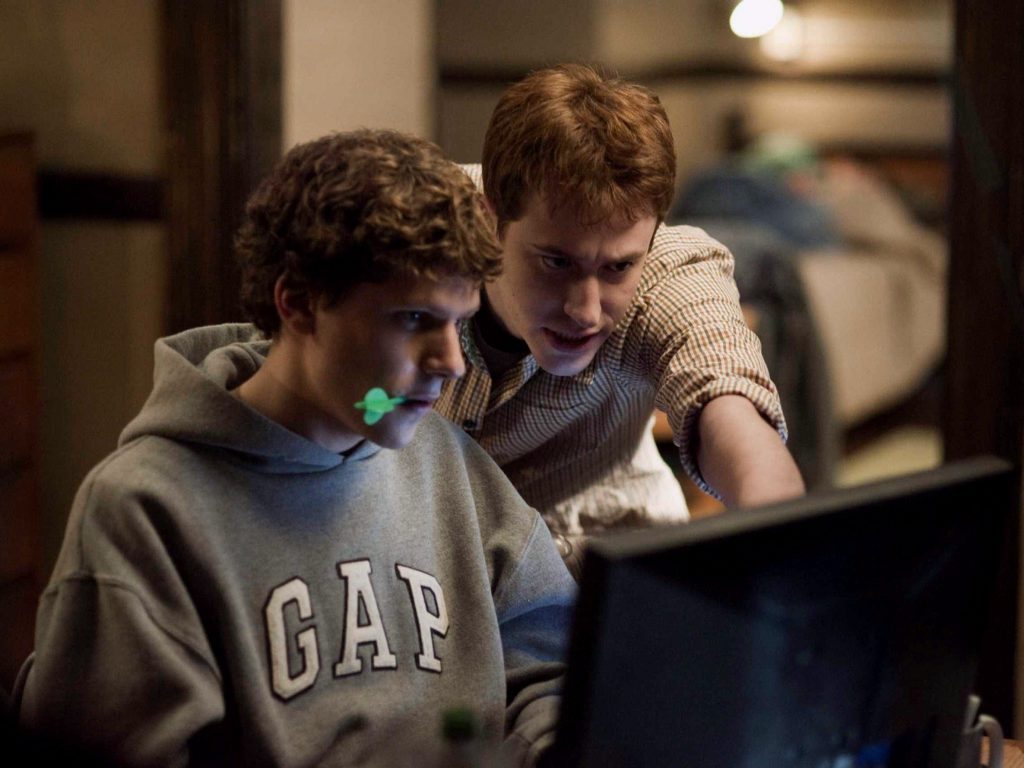
The Social Network (2010)
THE SOCIAL NETWORK, directed by David Fincher, is the stunning tale of a new breed of cultural insurgent: a punk genius who sparked a revolution and changed the face of human interaction for a generation, and perhaps forever. Shot through with emotional brutality and unexpected humor, this superbly crafted film chronicles the formation of Facebook and the battles over ownership that followed upon the website’s unfathomable success. With a complex, incisive screenplay by Aaron Sorkin and a brilliant cast including Jesse Eisenberg, Andrew Garfield and Justin Timberlake, THE SOCIAL NETWORK bears witness to the birth of an idea that rewove the fabric of society even as it unraveled the friendship of its creators. Nominated for 8 Academy Awards®, including Best Picture (2010).
In the decade-plus since it was released, we as a society have moved on from simply calling The Social Network the “Facebook movie.” While the narrative obviously concerns this topic, the themes of the film spiral out into far more complex areas of greed and search for a human connection. The circumstances surrounding Mark Zuckerberg have changed immensely since this film was released, evolving from a narrative that seemed to paint a dim picture of the social media founder to one that certain parties believe should have excoriated all the more readily. This is one of the beautiful things about the film; Sorkin and Fincher did not set out to create a narrative with an agenda outside of being truthful to the human condition. Despite your feelings about how Facebook has impacted society on a grander scale, the narrative presented in the film taps into something universal beyond those narrow parameters.
No one but David Fincher could have brought such an electric intensity to this material. It is not just that Fincher is a director who demands perfection; the filmmaker is a person who will not be satisfied until he knows that he has given everything he has to the scene and everyone else on the set has done the same. Lore of nearly 100 takes of a single scene threatens to overshadow the impressive nature of the final product. Editors Kirk Baxter and Angus Wall bring a seamless hand to the construction of the film with any imperfections not noticeable to anyone but Fincher himself. For what is ostensibly a film about a series of intense conversations, the unyielding pacing of the film makes you feel as if the stakes are life or death. Fincher should also be credited for getting his performers to a place where they could deliver this caliber of performance. What must have been arduous in the moment translated to some of the most transfixing moments between actors captured on screen during the decade. While The King’s Speech is by no means a terrible film (it’s great!), The Social Network is in a different league of excellence which few films ever achieve and rightfully should have won Best Picture.
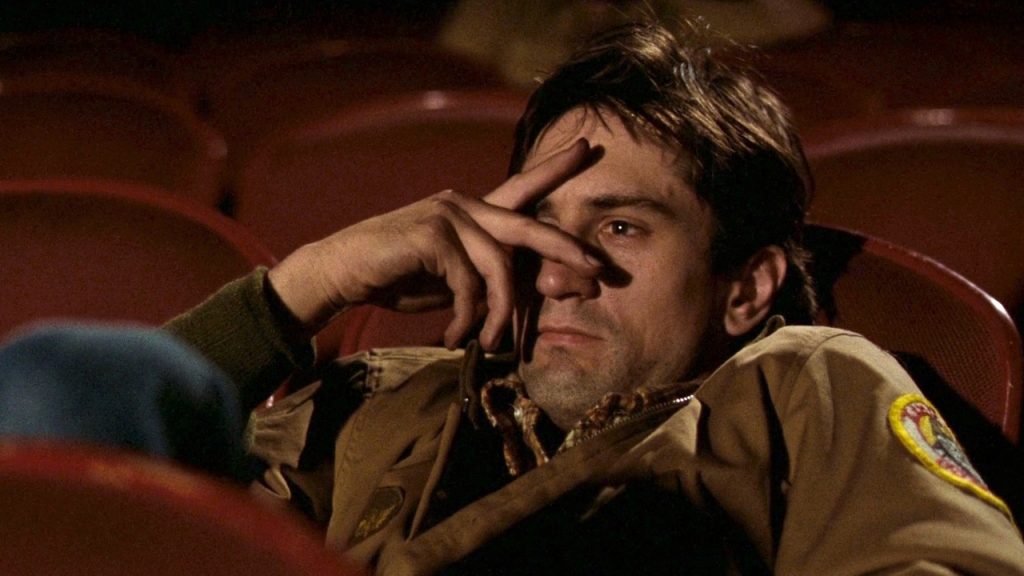
Video Quality
All six films in the Columbia Classics 4K Ultra HD Collection: Volume 2 are given a 2160p 4K UHD upgrade that serve as a significant step up from their Blu-Ray counterparts. The set also includes Blu-Ray versions of each film with Oliver! and Stripes being given newly remastered transfers on that format. The previous releases were presented to varying degrees of success on Blu-Ray, but Sony completely obliterates any previous releases with these new 4K UHD Blu-Ray discs. In an effort to not duplicate descriptions, I will group certain films together while pointing out noticeable differences. The main takeaway for this collection is that all transfers are representative of some of the best ever committed to the format. A 5-star effort all around.
For the black-and-white Anatomy Of A Murder, the results of the 4K upgrade are truly spectacular. The release was struck from a 4K restoration of the 35mm Original Picture Negative and the 35mm Duplicate Negative. The black and white cinematography is simply gorgeous with smooth gradients and subtle textures. This transfer maintains the filmic quality of the picture with fine film grain giving way to rich details. Subtle details that never would have been able to be detected are suddenly on full display with this transfer. The HDR grading allows for a truer sense of grayscale than ever before. The accuracy of the separation between black and white is truly breathtaking. Black levels are incredibly deep without any pesky nuisances such as digital noise or compression artifacts. The transfer also eradicates any dust specks or print damage that previously plagued the best surviving elements. This picture showcases an impressive amount of depth to the image which gives way to a pleasing sense of scale within the locale. Casual film fans may not believe that 4K could benefit a black-and-white film, but that could not be further from the truth. Sony has accomplished something truly stupendous with this transfer.

Taxi Driver makes its long-awaited 4K UHD Blu-Ray debut with a stunning 2160p/Dolby Vision transfer, while Oliver! comes with a 2160p/HDR presentation which allows the film to look better than it ever has. Oliver! utilized a 4K restoration of Original Camera Negative with some replacements using a 35mm interpositive. Taxi Driver was derived from a previously-completed 4K restoration of the Original Camera Negative which premiered theatrically in 2011 but is available for the first time on 4K UHD disc with Dolby Vision grading. These new 4K UHD discs offer notable improvements over the previous Blu-Rays, especially in the night-and-day difference of Oliver!. Both movies have a lovely amount of natural film grain which can be very thick but very tight and specific. This allows the movies to shine and gives a lot of pleasing texture and detail to the transfers. The images present a miraculous amount of depth that makes these vastly different locales feel more three dimensional than ever.
The improvements in contrast and overall clarity are outstanding, especially when you look at the exteriors of the town buildings or textures on costumes. The UHD disc contains very vibrant, deep colors throughout with the lavish Oliver! sets truly dazzling thanks to the cinematography. White levels are brighter and offer a greater stability without veering into blooming. Black levels are deep and allow the picture to maintain an excellent amount of depth and detail in darker environments. The depraved city nightlife of Taxi Driver offers a previously unknown visual splendor as Travis drives down the street with light flowing through windows. Skin tones look natural and the clarity of the transfer gives you a great amount of facial detail including some of the sweat of theater patrons escaping from the summer heat in the Scorsese film. These transfers are a treat for fans of these cinematic classics. You could not ask for better for these two titles.
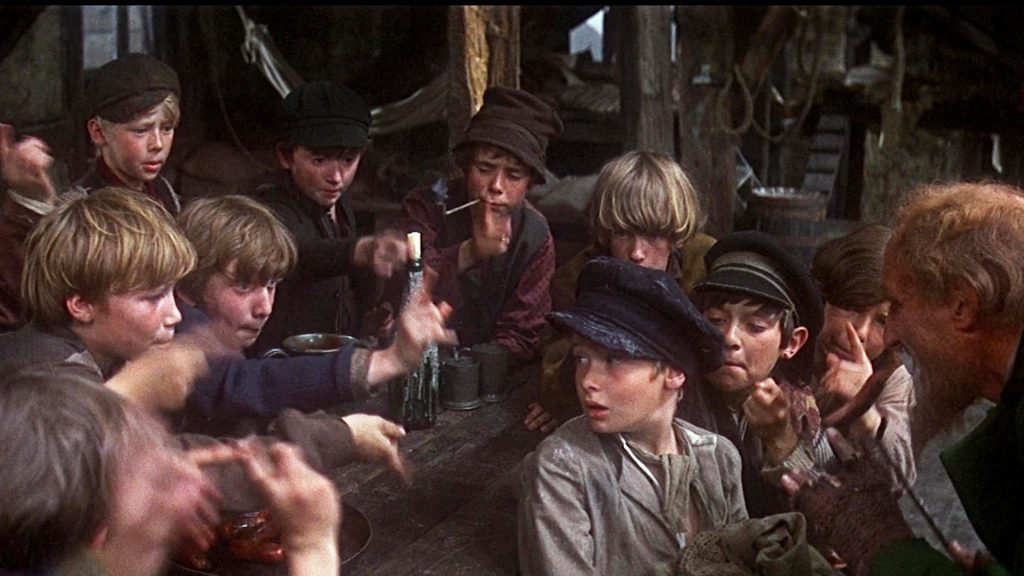
The 4K UHD Blu-Ray of Stripes offers a noticeable uptick in quality over the already strong accompanying Blu-Ray, itself remastered and an upgrade from the ancient Blu-Ray. This transfer has been derived from a 4K restoration of the 35mm Original Picture Negative and an HDR pass with some scenes from the Extended Version derived from a 35mm interpositive. Sense and Sensibility delivers a miraculous presentation from a 4K scan of the Original Picture Negative with an HDR pass. The greatest gains are in the employment of the color spectrum. The HDR really harnesses the visual wonder that Reitman and Lee have on display and features it to its full potential. One only has to look at any scene set in the countryside of the Austen film to experience visual brilliance. Heck, even the neon signs at the mud wrestling club in Stripes present with a grander brilliance than one could imagine. Colors are more rich, natural and accurate to what was intended by the creative team. Even the more drab colors such as the muddy earth of basic training in Stripes offer a glorious stability. The highlights in the film are more defined with whites more pure and balanced with no instances of blooming to be found. The black levels are especially awe-inspiring in these presentations, staying deep and inky with great detail.
The transfers sport a picture that has glorious film grain that resolves perfectly without being clumpy or unnatural. There has been no digital tinkering on this transfer, so this disc is free of DNR, compression artifacts and other encode issues. Skin tones appear way more natural with healthy doses of fine detail apparent on faces such as pores. The grime of the cadets in training offers subtle texture to their faces. The production design that is a signature of period films is presented with immense depth and perfect clarity in Sense and Sensibility. Take a look at the scenes inside any of the interiors to see a wide array of minute details that are visible for the first time ever on disc. The costumes and textural output of the feature is simply marvelous to behold with everything rendering without any issues. These are very natural looking transfers that offer up a flawless presentation that should please fans of both films.
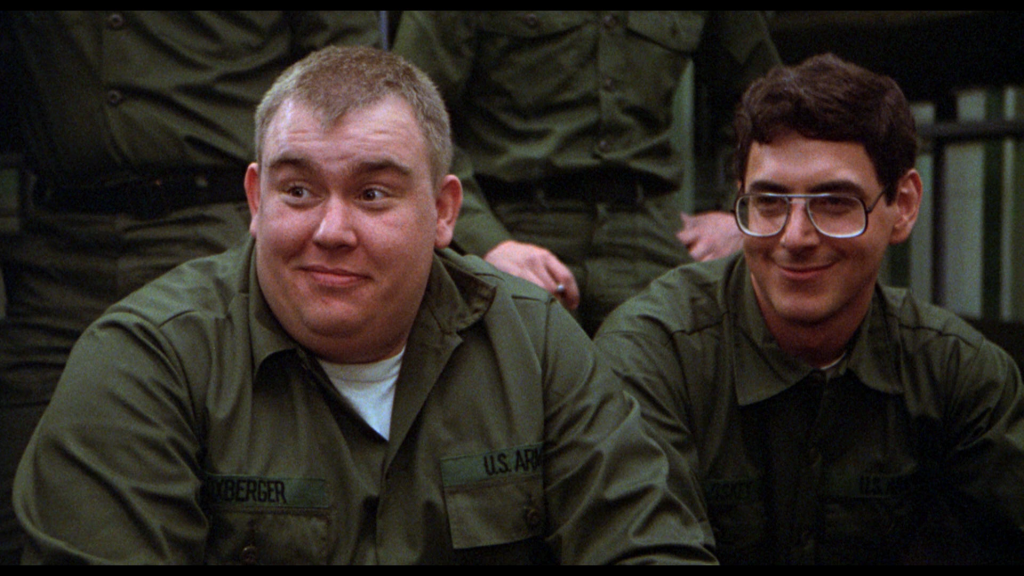
The Social Network makes its long-awaited 4K UHD Blu-Ray debut with a stunning 2160p/Dolby Vision transfer that allows the film to look better than it ever has. The film was shot digitally and sourced from a 2K master with HDR applied which means this disc will offer the least amount of “wow” factor of these six discs in terms of an upgrade. Nevertheless, when compared to the old Blu-Ray, this disc offers subtle improvements in many respects. You can clearly see specific text such as some writing in notebooks that were too unclear to capture before. The improvements in contrast, sharpness and overall clarity are outstanding, especially when you look at the depth and detail of the interiors and textures of the clothing.
The UHD disc contains very deep colors throughout even with the gloomy color palette favored by Fincher. This is a disc where Dolby Vision is not given a chance to truly shine, but the different shades of grey, blue and black are more refined than ever. White levels are brighter and offer a greater stability without veering into blooming. Black levels are extremely deep and allow the picture to maintain an excellent amount of depth and detail in darker environments. Skin tones look natural and the clarity of the transfer gives you a great amount of facial detail including stubble and perspiration from the rowing team. This transfer is a treat for fans of the film. This disc might not offer a night and day difference, but the gains in stability and depth are worth the upgrade to these eyes.
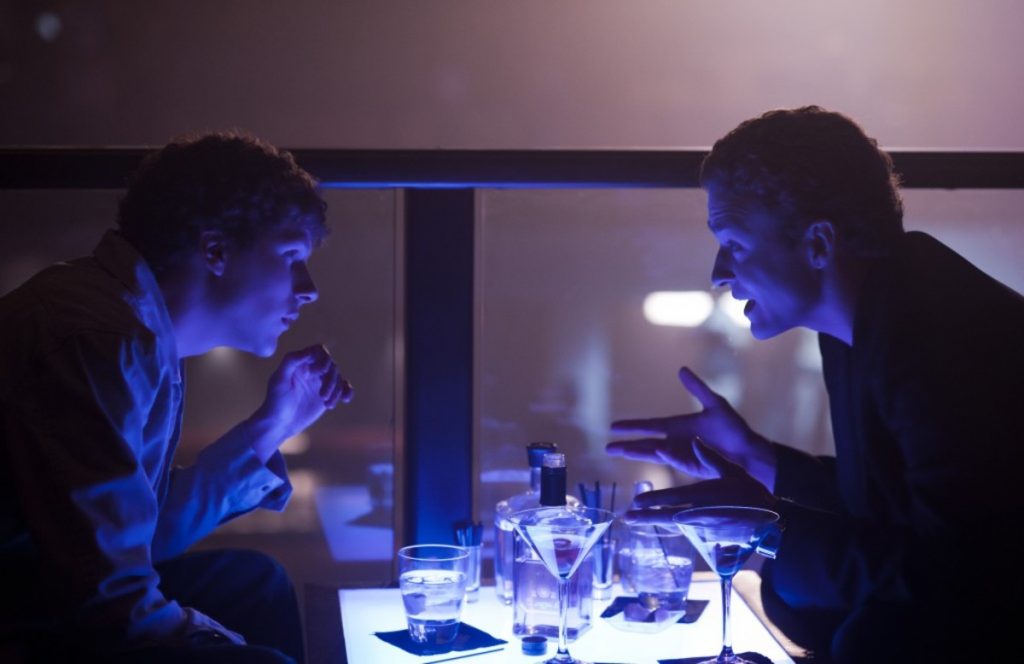
Audio Quality
All of these 4K UHD Blu-Ray discs utilize a Dolby Atmos track outside of Taxi Driver which only retains an outstanding lossless DTS-HD 5.1 Master Audio track and a DTS-HD Mono Master audio track. All of the other films also include their original lossless audio tracks for the purists. The sheer amount of audio and subtitle options Sony provides on these discs is unlikely to displease anyone. The Atmos tracks give the films even with a reserved soundscape a real vitality and immersive quality. There is an emphasis on the front channels for a good portion of the sounds, but activity extends to the surrounds, rears and overhead speakers to make these worlds feel more robust and all-encompassing. The sounds up above are not constant, but they are present enough to keep the listening experience quite engaging. These channels really come in handy during scenes taking place in the rain or in a raucous public place.
These films really satisfy when it comes to the music, as the memorable scores wash over you in a really satisfying, enveloping way. Dialogue is crisp and clear without ever getting lost amongst the music or sound effects. The low end effects from the subwoofer give certain moments that much-needed extra weight such as the impact of certain explosions in Stripes. Atmospheric sound effects are rendered appropriately within each mix so that directionality is never an issue. Most of these films are more dialogue driven than an action film, but the expanded audio track allows them to feel more powerful and precise than ever. Sony has done some stellar work on all of these presentations.
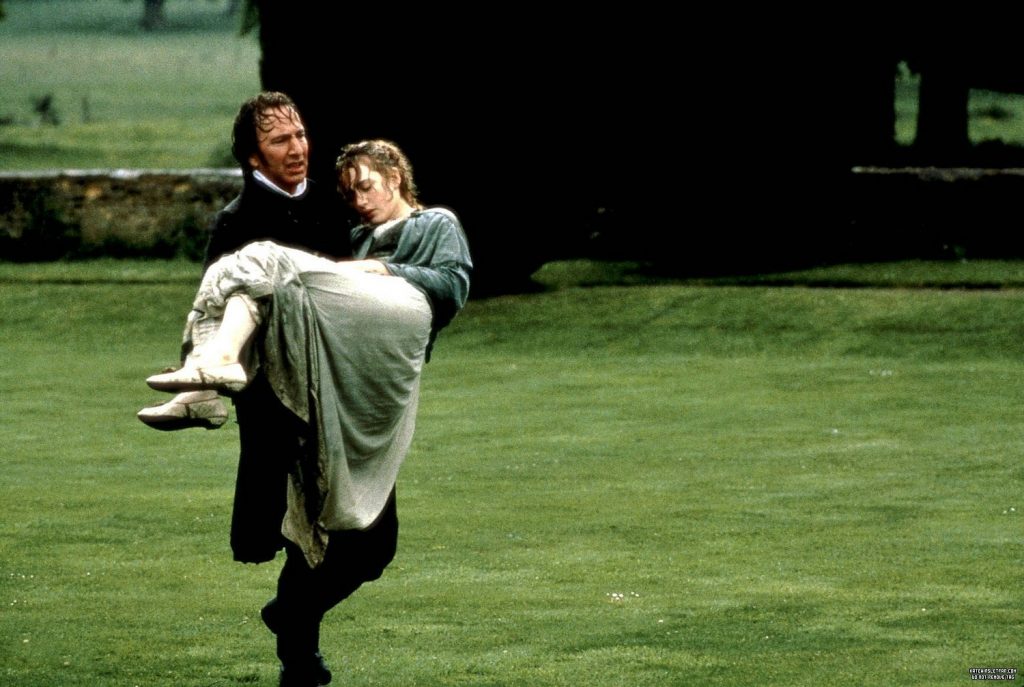
Special Features
The Columbia Classics 4K Ultra HD Collection: Volume 2 includes a coffee table style book featuring an introductory essay explaining the thematic link shared between the six titles in this collection followed by essays for each title. The book includes the new essay “Dissecting Anatomy Of A Murder” by film historian Julie Kirgo, “Notes On Oliver!” by entertainment historian John Kenrick, “Loneliness And Hell: The Terrifying Visions Of Taxi Driver” by film critic Glenn Kenny, “Stripes Marches On” by writer Michael G. McDunnah, “The Enduring Legacies of Sense and Sensibility” by writer Kayti Burt, and “Diss, Connection: You and The Social Network” by journalist Nev Pierce. Each of these break down the themes of the story, the production, the legacy of the picture and more. There is also a brief section dedicated to details on the remastering process for each film. These materials provide a great amount of context and insight into each film that is very worthwhile. Please see pictures of the packaging at the bottom of this review. The on-disc special features are as follows:
Anatomy Of A Murder
Blu-Ray
- Audio Commentary: Film Historian Foster Hirsch provides a thoroughly informative and entertaining commentary track in which he expands on his vast knowledge of director Otto Preminger with a copious array of production anecdotes, historical background, thematic analysis and more. One curious downside is this track is only available on the Blu-Ray, and not as one of the many audio tracks on the 4K disc.
- Gary Giddins Interview: A 22-minute interview with American jazz critic Gary Giddins in which he discusses the use of Duke Ellington in the film. In this piece he discusses the counterintuitive nature of the score to the location, Preminger’s mistaken belief that jazz was “America’s music”, the different themes throughout the picture, Ellington making every instrument “important” and more.
- Pat Kirkham Interview: A 15-minute interview with writer Pat Kirkman concerning the title design of Saul Bass. In this piece she discusses the relationship between Bass and Preminger, the fights with distributors, evolution in marketing techniques, some other work from Bass and more.
- Foster Hirsch Interview: A 30-minute interview with writer Foster Hirsch concerning the life and career of director Otto Preminger. This is a very nice piece which covers a lot of biographical details, the storied career of the filmmaker, the place of Anatomy of a Murder in his output, his legacy and more.
- Excerpt From Firing Line Featuring Otto Preminger: A ten-minute excerpt from the television show Firing Line in which Preminger and William F. Buckley Jr. discuss censorship and the Production Code. This is a fascinating piece of history.
- Theatrical Trailer: The nearly five-minute trailer is provided here in which Preminger appears to “question” some key witnesses about their role in the film along with some footage from the movie.
Oliver!
Blu-Ray
- Audio Commentary: Film Historian Steven C. Smith delivers a thoroughly informative and entertaining commentary track in which he goes in depth on the history of the Charles Dickens source material, the talent involved with adapting the musical for the silver screen, the careers of the performers, the musical composition and so much more.
- Jack Wild Screen Test: A minute-and-a-half of a vintage screen test for the young performer.
- Original Behind-The-Scenes Featurette: An eight-minute vintage featurette which gives a broad overview of the production with some really cool behind-the-scenes footage interspersed with clips from the film.
- Meeting Oliver!: A 15-minute conversation with a grown up Mark Lester in which he recalls his experiences working on the film and with director Carol Reed. There are many great anecdotes about his feelings towards his costars and his performance in the film.
- Meeting Fagin!: A 13-minute conversation with Ron Moody in which he reflects on his involvement with the film from his unlikely casting, the relationship with the young star and more.
- The Locations Of Oliver!: A collection of five short featurettes totaling five minutes which takes a look at some of the locations featured in the film.
- Sing-Alongs (36:09): The musical scenes from the film with karaoke-style lyrics presented across the bottom of the screen featuring Food Glorious Food, Consider Yourself, Pick a Pocket, I’d Do Anything, Be Back Soon, Who Will Buy?, Reviewing the Situation, and Oom Pah Pah.
- Dance-Alongs (12:53): Here you will find instructions for dancing to Food Glorious Food, I’d Do Anything, and Be Back Soon.
- Dance And Sing-Alongs (10:13): Here you will find instructions for singing and dancing to Food Glorious Food, I’d Do Anything, and Be Back Soon.
- Trailers: Included here is a Theatrical Trailer (1:41), Teaser Trailer (1:41) and an Awards Trailer (4:09).
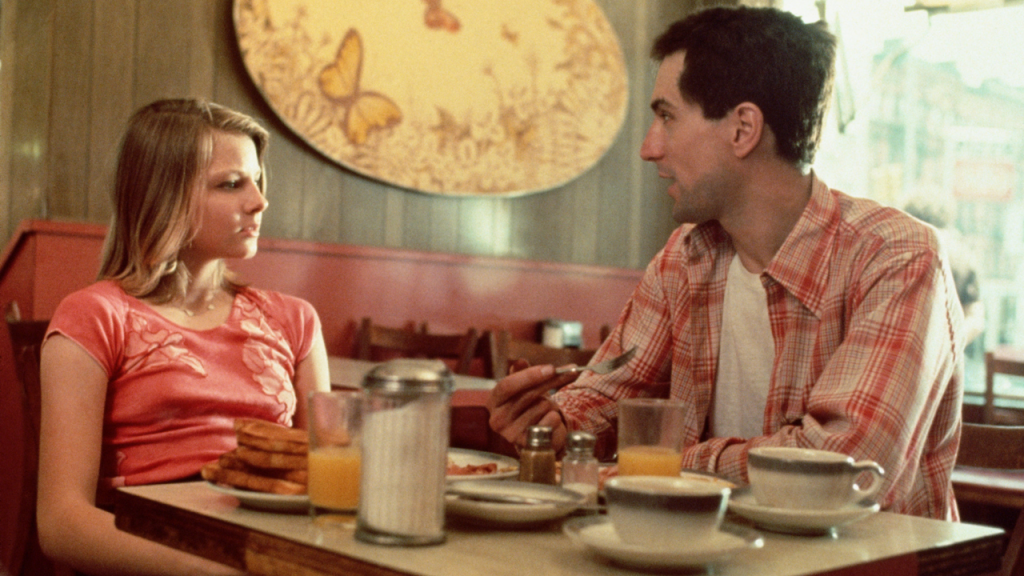
Taxi Driver
4K UHD
- Making Taxi Driver: A substantial 71-minute documentary that gives a broad look at the production of the film from the themes of the picture, the relationships between the cast and crew members, the film’s legacy and more. There are some incredible anecdotes relayed here that will make you look at the film differently in some respects.
- Intro To Storyboards By Martin Scorsese: A nearly five-minute piece in which Scorsese discusses how essential it was for him to create storyboards for the picture in order to bring his vision to life.
- Storyboard To Film Comparison: An eight-minute selection of moments from the film where you get to see how they compare to the final version within the same frame.
- Photo Galleries: There are sections devoted to images for the Bernard Herrmann Score, On Location, Publicity Materials and Scorsese At Work.
- 20th Anniversary Re-Release Trailer: The minute-and-a-half trailer is provided here.
Blu-Ray
- Audio Commentary #1: The original 1986 commentary with Martin Scorsese and writer Paul Schrader recorded by the Criterion Collection is included here. The commentators were recorded separately and then edited together. A moderator identifies the speakers and provides sporadic background tidbits of her own. Scorsese discusses arriving at his filmmaking style, the process of shooting in New York, set design, casting and performances, and numerous other insightful tidbits. Schrader discusses how quickly he wrote the script, the themes of the story, the genesis of metaphor through theme, refinements to the work along the way, and much more. This is an essential listen for film fans.
- Audio Commentary #2: Professor Robert Kolker provides a more focused and deeply analytical commentary track which is sure to illuminate elements of the picture that even the most ardent fans may not have noticed previously. Being a teacher, Kolker feels like he is giving the most entertaining lecture imaginable.
- Audio Commentary #3: Writer Paul Schrader once again returns to discuss his original script, the necessity to set the film in New York, the talents of the cast members and much more. There is some overlap from the first track, but there is a lot to appreciate about this one, as well.
- Tribeca Film Festival 40th Anniversary Q&A: A 42-minute cast reunion which begins with an introduction to the film by De Niro and Jane Rosenthal followed by the Q&A with Martin Scorsese, Robert De Niro, Jodie Foster, Cybill Shepherd, Paul Schrader, Michael Phillips and Harvery Keitel. This is packed with great moments including Scorsese discussing his attraction to the script, improvisation in the film, the initial excitement of coming together on the project, the score from Bernard Hermann, De Niro’s hair and much more.
- Producing Taxi Driver: A ten-minute discussion with producer Michael Phillips in which he discusses his draw to the script, the work of the talent on this film, the tension between the production and the studio and more.
- God’s Lonely Man: A 22-minute featurette exploring the character of Travis Bickle primarily through the thoughts of writer Paul Schrader in which he discusses his background and influences.
- Influence And Appreciation – A Martin Scorsese Tribute: A nearly 19-minute featurette in which Oliver Stone, Paul Schrader, Roger Corman, Robert De Niro, Robert Kolker, and others speak on the legendary Martin Scorsese in terms of his style as well as the man he is beyond the camera.
- Taxi Driver Stories: A 22-minute piece in which real-life taxi drivers from the time period reveal some crazy stories from their time on the job.
- Martin Scorsese On Taxi Driver: A 17-minute featurette in which Scorsese discusses fighting to get this story on screen, working with Paul Schrader, inspirations he drew from during the making of this film, the cultural significance of the film and more.
- Travis’ New York: A six-minute piece in which Cinematographer Michael Chapman and former New York Mayor Ed Koch discuss the New York of the 1970s and how the film captured the feel of the city.
- Travis’ New York Locations: A nine part series totaling five minutes showcasing certain locations from the film with how the area looked in 2006. Some of the changes are very striking.
- Theatrical Trailer: A moody three-minute trailer is provided for the film.
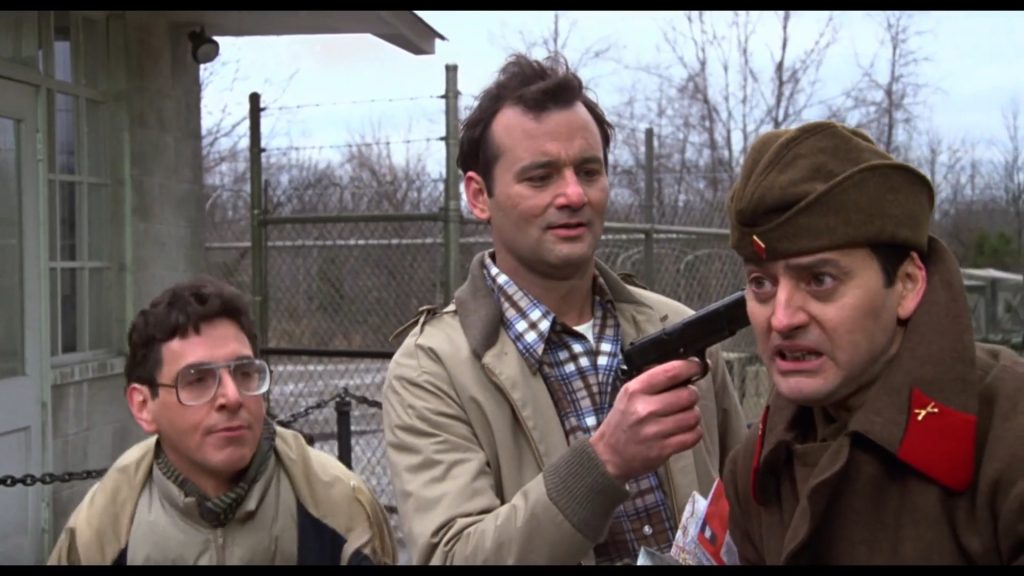
Stripes
4K UHD
- 40 Years Of Stripes With Bill & Ivan – That’s The Fact, Jack!: A brand new nearly 21-minute virtual discussion in which Bill Murray and Ivan Reitman discuss their early days with the National Lampoon, how the film was originally written for Cheech and Chong, adapting the drug material for other performers, memories of working with the ensemble, finding the line of common decency and much more. This opens up with an amusing bit about Murray trying to find the right place to film within his house.
- 40 Years Of Stripes With Bill & Ivan – Lighten Up, Francis: The 24-minute second part of the discussion in which the two discuss the cast members who have passed since the release of the film, the talented women in the ensemble, their favorite scenes, shooting on location and more. There are so many lovely memories of Harold Ramis in particular that are heartwarming. There is even a special appearance by Cinematographer Bill Butler on his 100th birthday.
- Theatrical Trailer: The three-minute trailer is provided here.
Blu-Ray
- Audio Commentary: Director Ivan Reitman and Writer/Producer Dan Goldberg deliver a commentary track only available on the Extended Version twenty years after the film’s release. The two discuss working with the Department of Defense, the brilliance of Bill Murray, the role of improv in the film, the evolution of the film and much more that makes this an essential listen.
- Stars & Stripes Part One & Two: A combined 56-minute vintage documentary featurette in which Reitman, Goldberg and various cast members cover a lot of ground from the commentary track including the origins of the film, populating the film with a bunch of relative unknowns, anecdotes about shooting various scenes and more. This is a pretty thorough and enlightening examination of the film.
- Deleted & Extended Scenes: Seventeen scenes totaling 29 minutes of unused material is provided here for the first time.
- 1983 TV Version Of Stripes: A previously-unreleased edited TV cut of the film framed in 4×3 and presented in Dolby Digital 2.0 audio.
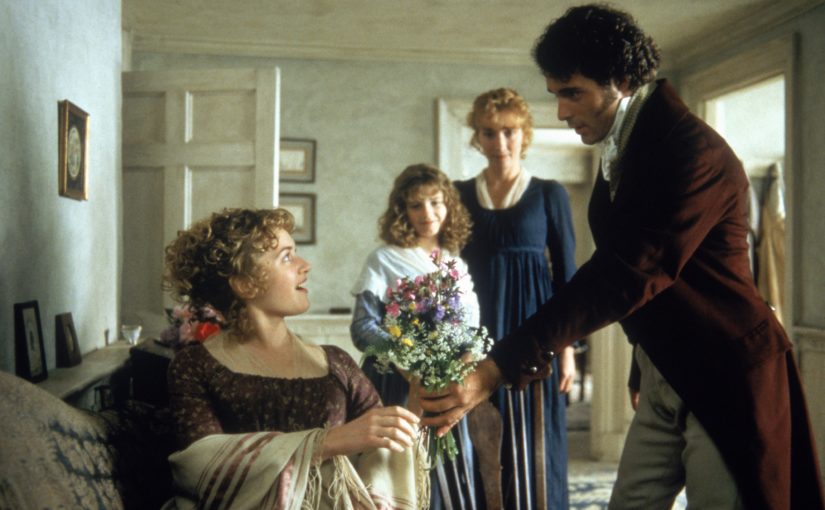
Sense And Sensibility
Blu-Ray
- Audio Commentary #1: Emma Thompson & Producer Lindsay Doran go in depth to the development of the script from the source material, finding the right performers for the roles, finding the right working relationship with Ang Lee to account for cultural differences, shooting on location and more. There are some very entertaining anecdotes shared throughout this one.
- Audio Commentary #2: Director Ang Lee and Co-Producer James Schamus provide a great commentary track in which they discuss his subtle direction style, some of his “zingers” that performers remember, the ensemble of the film, the visual effects in the film and more. There are small bouts of silence in here, but for the most part very entertaining.
- 25th Anniversary Reunion – Back To Barton Cottage: A new 28-minute virtual reunion with Emma Thompson, Kate Winslet, Greg Wise, Imelda Staunton, Imogen Stubbs, Myriam Francois, producer Lindsay Doran, and Director Ang Lee. It is such a joy to hear these people reflect back upon the creation and production of the film with deft and hilarious insights from each person.
- Adapting Austen: An eleven-minute vintage featurette which delves into the process of adapting the classic source material and finding a mind who could think in the language of the book.
- A Sense Of Character: An eight-minute featurette which goes into the various qualities of the characters and the performers who inhabit them.
- A Very Quiet Man: A 12-minute featurette which delves into the qualities Ang Lee brought to the film.
- Locating The World Of Sense & Sensibility: A six-minute look at the shooting locations of the film and how it helped bring the production to life.
- Elegance & Simplicity – The Wardrobe Of Sense & Sensibility: A four-minute conversation with Costume Designers Jenny Beavan and John Bright as they discuss the process of bringing the right look to the film.
- Deleted Scenes: Two unused scenes of material totaling nearly three minutes featuring a scene between Elinor and Mrs. Dashwood and a scene between Elinor and Edward.
- Trailers: There is a Domestic Trailer (2:08) and International Trailer (1:57) included here.
The Social Network
4K
- Theatrical Trailers: This disc provides Trailer #1 (1:05), Trailer #2 (2:30) and Trailer #3 (1:39).
Blu-Ray
- Audio Commentary #1: Director David Fincher provides a thorough commentary track in which he talks about setting the tone of the film from the first scene, the widespread casting process, balancing movie drama with realism, the special effects implemented and more.
- Audio Commentary #2: Writer Aaron Sorkin and members of the cast including Jesse Eisenberg, Andrew Garfield, Armie Hammer, Josh Pence and Justin Timberlake deliver an illuminating commentary track. In this track there are discussions of Fincher’s directing style, the benefits to shooting a scene 99 times, getting into character, their thoughts on the story, the themes of the piece and much more.
- How Did They Ever Make A Movie Of Facebook?: A four-part 93-minute documentary on the production of the film which includes a mixture of interviews with the cast and crew along with some behind-the-scenes footage. This piece gives you nearly everything you could want to know about the film. The subjects discuss the grander themes at play within the narrative, the casting process, rehearing to flesh out the characters, shooting on location, the props and costumes in the film, the perfectionism of David Fincher and more.
- Jeff Cronenweth and David Fincher On The Visuals: An eight-minute featurette with Fincher and Director of Photography Jeff Cronenworth in which they discuss developing a style that supports the dialogue, the importance of lighting to the mood, shooting the film digitally, recurring visual schemes throughout the film and more.
- Angus Wall, Kirk Baxter and Ren Klyce On Post: A 17-minute featurette which explores the process of taking the mammoth amount of material and whittling it down to the essentials. More specifically this piece focuses on the editing and sound design to make the picture complete.
- Trent Reznor, Atticus Ross and David Fincher On The Score: A 19-minute featurette that examines the creation of the music for this project and how it differs from the work in Nine Inch Nails. This is a really exciting piece which makes the highly technical incredibly entertaining.
- In The Hall Of The Mountain King – Music Exploration: An interactive featurette which allows you to listen to the first draft and final draft music only and full mix music cue for the Henley regatta sequence.
- Swarmatron: A nearly five-minute piece in which Reznor introduces you to a unique instrument that was essential to creating the sound of the film.
- Ruby Skye VIP Room – Multi Angle Scene Breakdown: Another interactive feature which takes a closer look at the Ruby Skye sequence from different “angles” including the technical scout on location in LA, principal photography, rehearsal with the actors and interviews with the technical personnel.
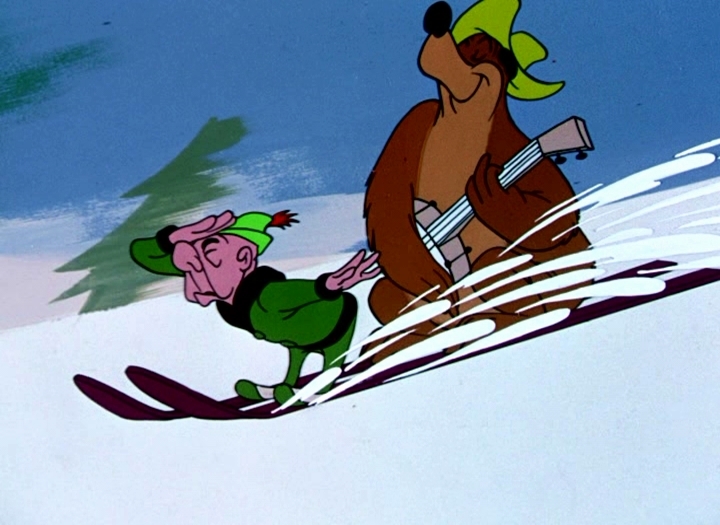
Bonus Disc
Twenty short films are provided totaling just over three hours. All shorts are provided in HD and look and sound quite stunning.
- Umpa: A nearly seventeen-minute live action “musical novelty” from 1933 starring Jack Osterman about a man who falls for a woman after seeing her on a park bench who cannot seem to cease saying the title of short (the name of a type of bird).
- The Three Stooges – Disorder In The Court: A nearly seventeen-minute short from 1936 starring Larry, Moe and Curly concerning what happens when the trio are called as key witnesses in a murder trial.
- Charley Chase – Man Bites Lovebug: An eighteen-minute short from 1937 starring Charley Chase concerning what happens when a man attempts to test his wife’s fidelity.
- Color Rhapsodies – Little Match Girl: An eight-minute animated short from 1937 about a poor little girl trying to make money and stay warm on the cold wintery streets. This one is low-key bleak.
- Charley Chase – The Sap Takes A Wrap: A sixteen-minute short from 1939 starring Charley Chase concerning the ownership of a mink coat.
- Color Rhapsodies – Dog, Cat and Canary: A six-minute animated short from 1945 about a cat who tries to get creative when it comes to securing food.
- The Ragtime Bear: A seven-minute animated Mr. Magoo short from 1949 about the near-sighted man making a terrible mistake concerning his nephew. If you like banjo playing bears, this is the short for you!
- The Wonder Gloves: A seven-minute animated short from 1951 which tells the tale of how a magical pair of boxing gloves gave Little Johnny’s nephew the ability to beat a champion boxer.
- Georgie And The Dragon: A seven-minute animated short from 1951 concerning what happens when a young Scottish boy tries to take a dragon as a pet.
- Madeline: A seven-minute Jolly Frolics animated short from 1952 concerning the classic tale of the little Parisian girl.
- Pete Hothead: A seven-minute animated short from 1952 concerning a man with a fiery temper who gets an unexpected surprise in a package he orders.
- The Tell-Tale Heart: An eight-minute animated short from 1953 telling the classic Edgar Allan Poe tale as narrated by James Mason.
- When Magoo Flew: A nearly seven-minute animated Mr. Magoo short from 1954 about the near-sighted man who attempts to go see a movie but instead takes an unexpected trip on an airplane. This was the first UPA short made for CinemaScope.
- The Man On The Flying Trapeze: A seven-minute animated short from 1954 which functions as an animated take on All About Eve.
- Christopher Crumpet’s Playmate: A nearly seven-minute animated short from 1955 concerning what happens when a young boy’s imaginary elephant friend becomes visible to his dad.
- Stage Door Magoo: A nearly seven-minute animated Mr. Magoo short from 1955 about the near-sighted man as he tries to take the lead in an opera but causes much havoc in the process.
- April In Portugal: A 20-minute live-action travel film from 1956 starring Jocelyn Lane which takes us abroad.
- The ChubbChubbs!: A six-minute animated short film from 2002 about a janitor who aspires to be a karaoke singer but finds himself worried about a potential invasion of creatures. This won the Academy Award for Best Animated Short Film in 2003.
- The Early Hatchling Gets The Worm: A two-minute animated Angry Birds short film from 2016 about a hatchling who forms an unlikely friendship with a worm.
- Puppy! A Hotel Transylvania Short: A five-minute animated Hotel Transylvania short film from 2017 about Dracula giving into his grandson’s request for a puppy in a destructive fashion.
Final Thoughts
The Columbia Classics 4K Ultra HD Collection: Volume 2 is in a word perfection. It is not false advertising to call these films classics as each one has earned the title honestly. From the early courtroom drama of Anatomy Of A Murder to the timeless tale of power and isolation in The Social Network, and everything in between, each film is an absolute treasure. Not only are the films some of the best cinema has to offer, but the new 4K UHD Blu-Rays prove once again that Sony does not miss. The A/V presentations are as close to perfection as one could realistically expect from one of the best companies supporting the 4K UHD format. These releases also carry over all of the legacy special features along with adding a few key new pieces to enrich the experience. Not only this, but all of these films come in a stunning package which includes a coffee table book plus an entire disc of live action and animated short films that are unbelievable. This is what every collector dreams of when they think about how they want their favorite films to be treated. If you even passingly enjoy these films, you owe it to yourself to pick up this collection before it goes out of print. Essential
Columbia Classics Collection: Volume 2 is currently available to purchase on 4K UHD Blu-Ray and titles are available individually on Digital.
Note: Images presented in this review are not reflective of the image quality of the 4K UHD Blu-Ray.
Disclaimer: Sony Pictures Home Entertainment has supplied a copy of this disc free of charge for review purposes. All opinions in this review are the honest reactions of the author.
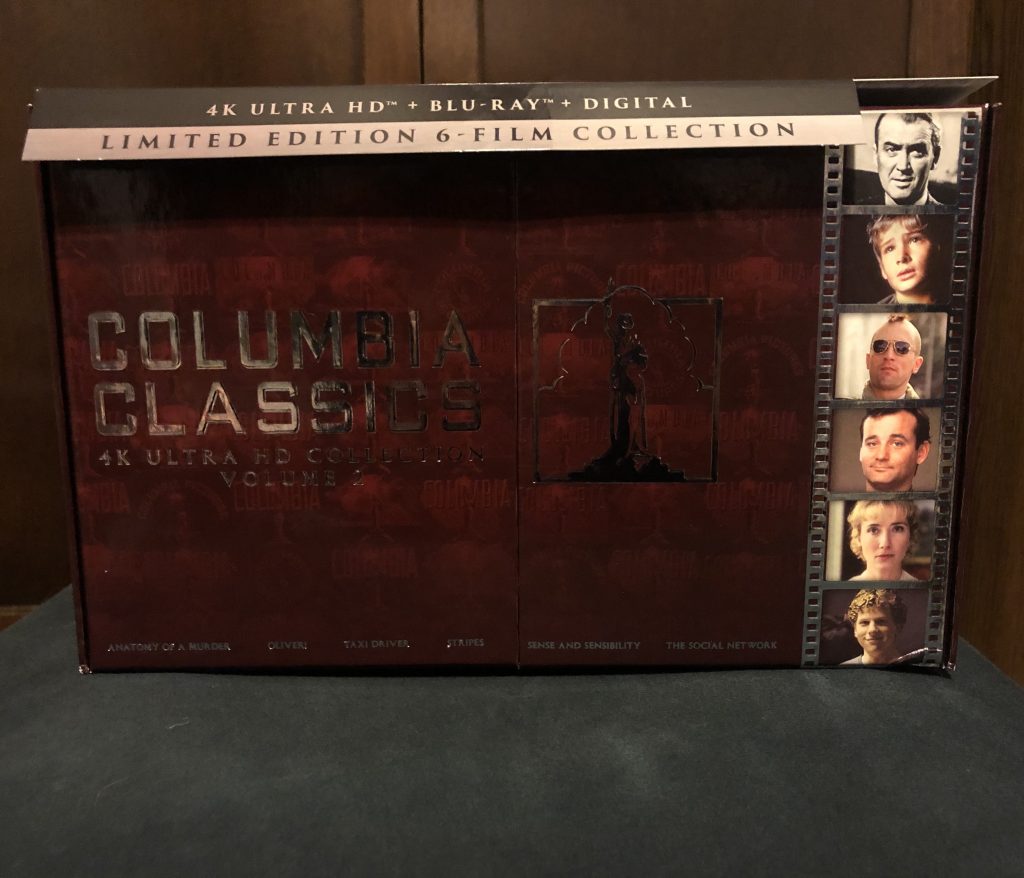
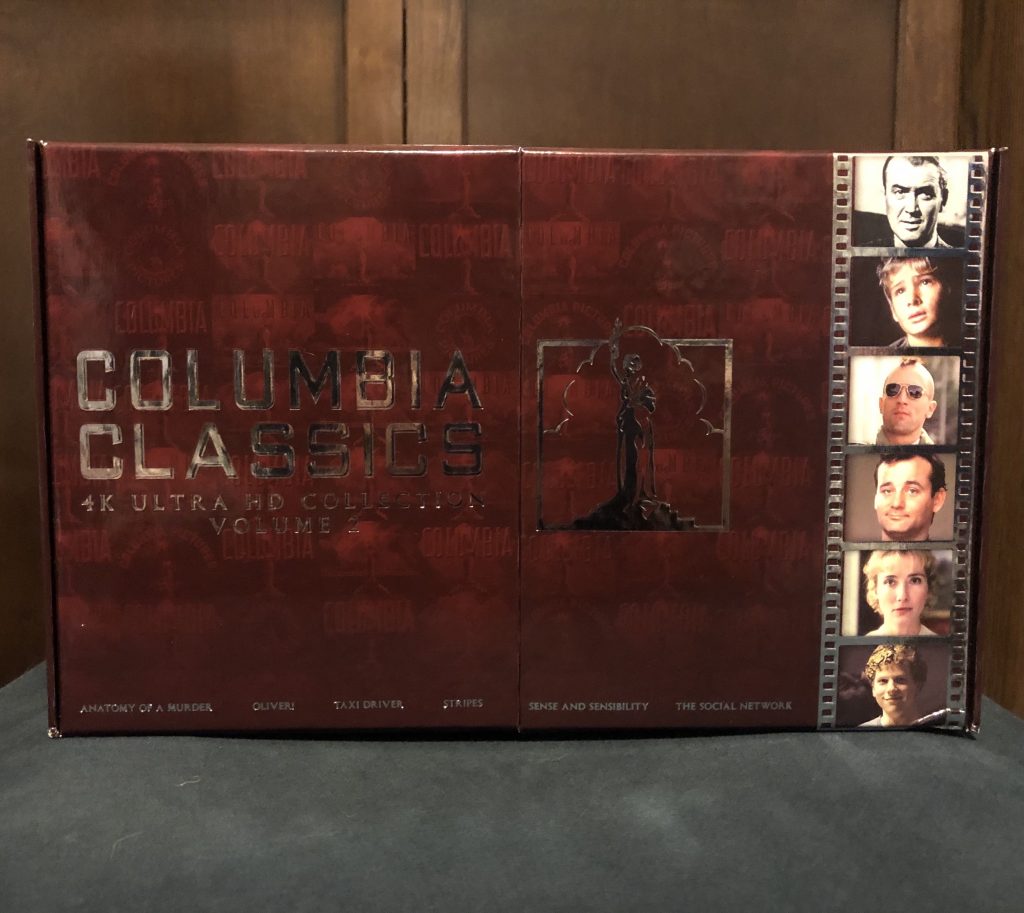
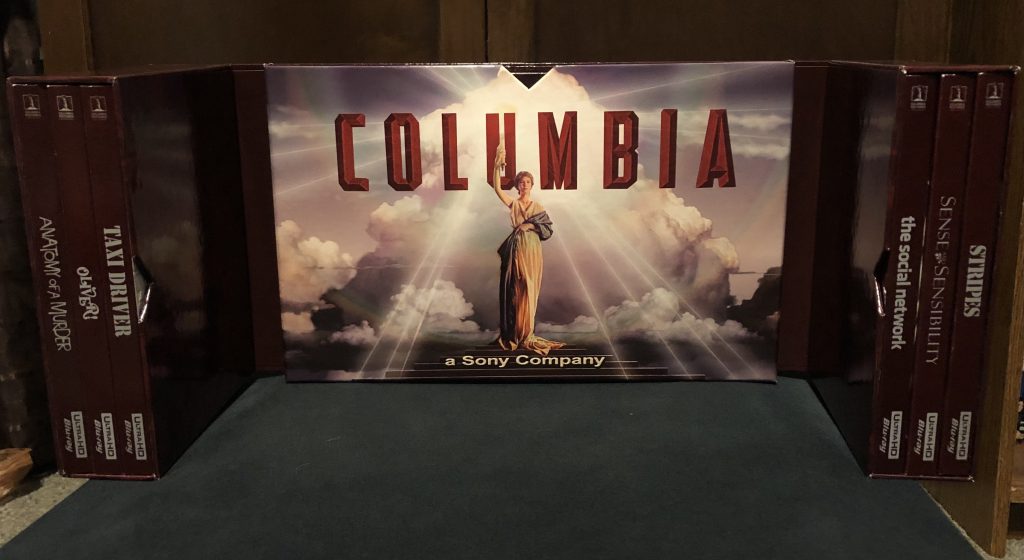
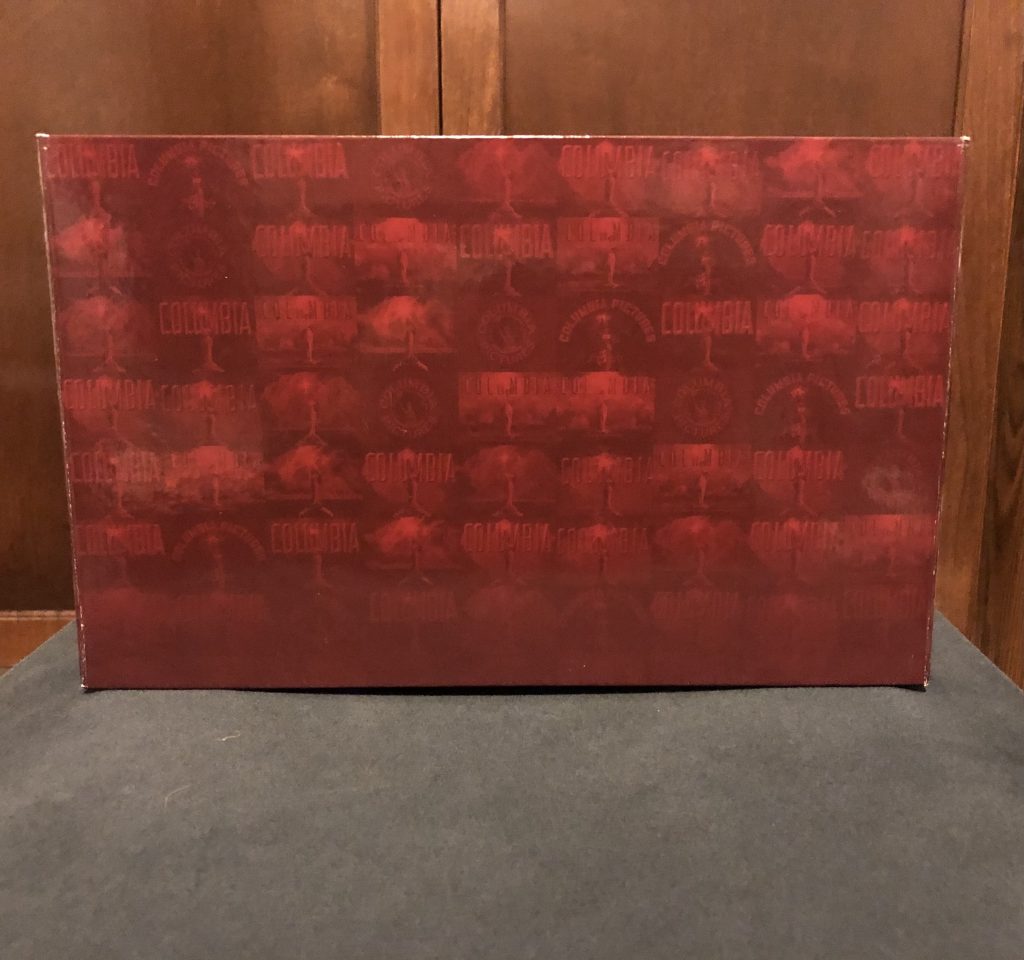
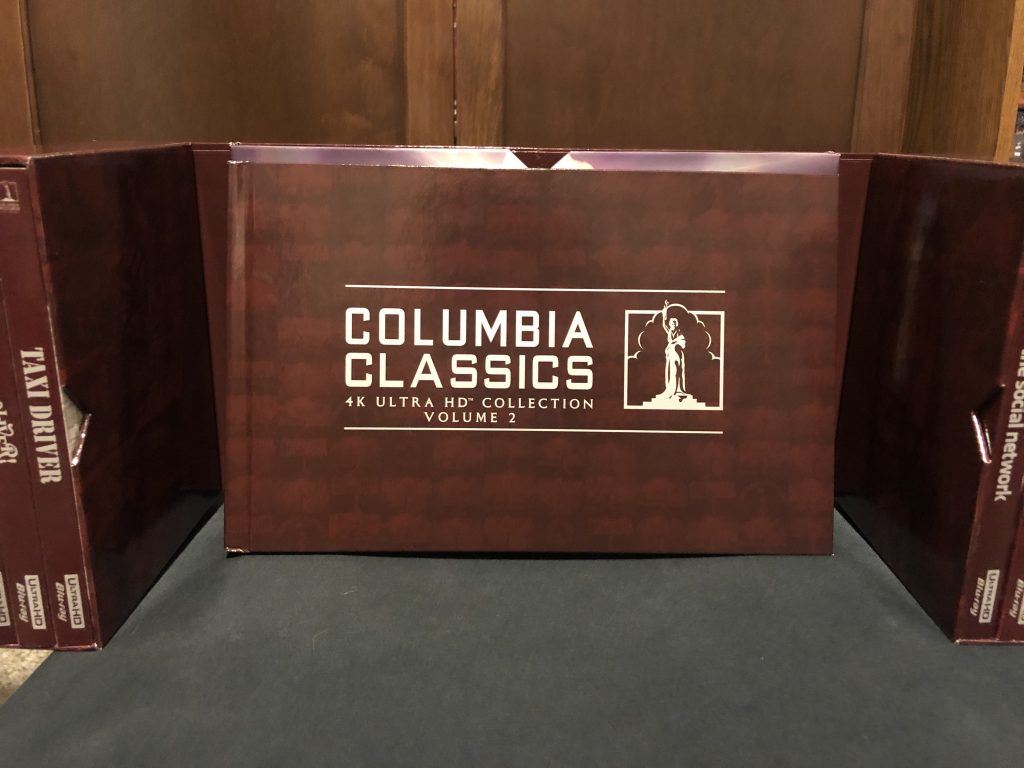
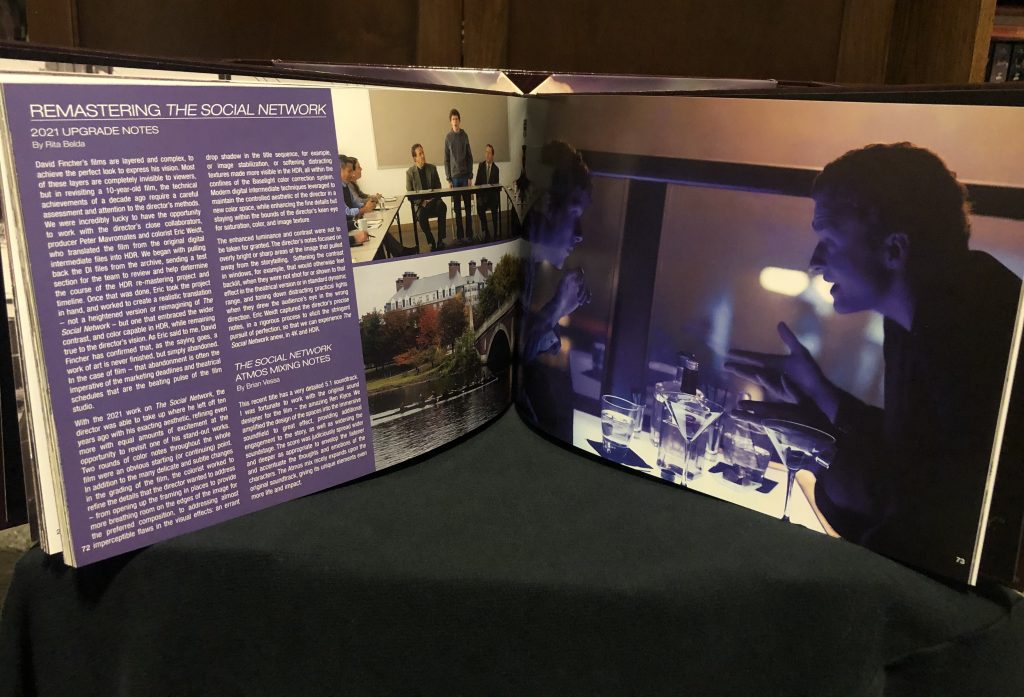
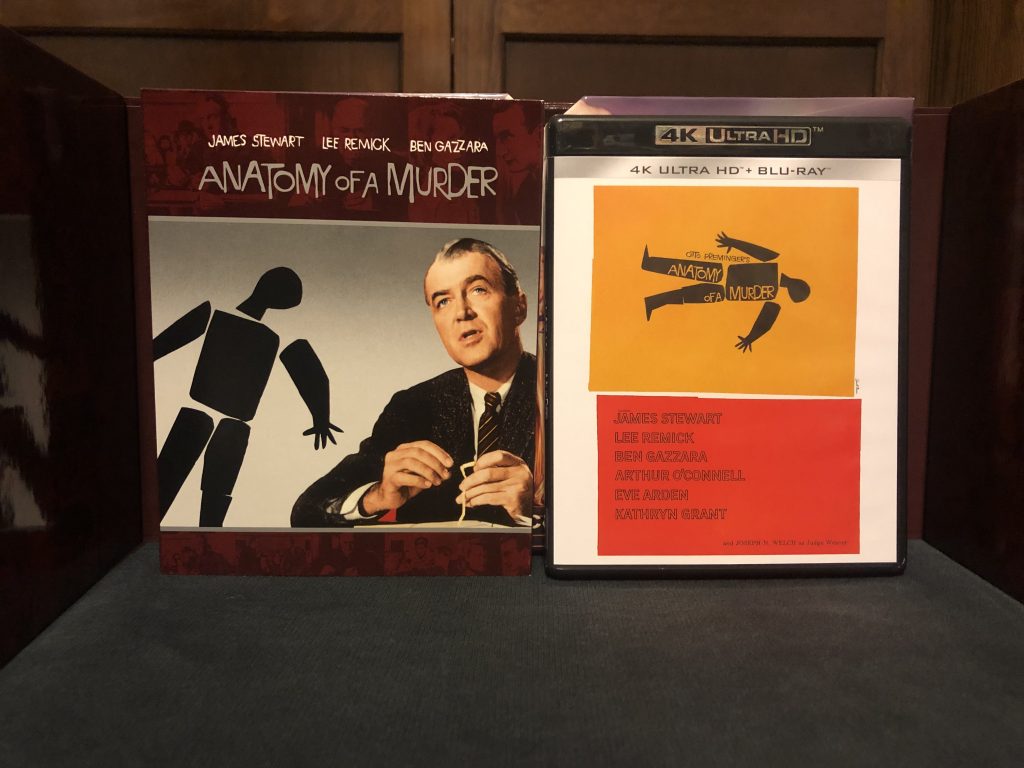
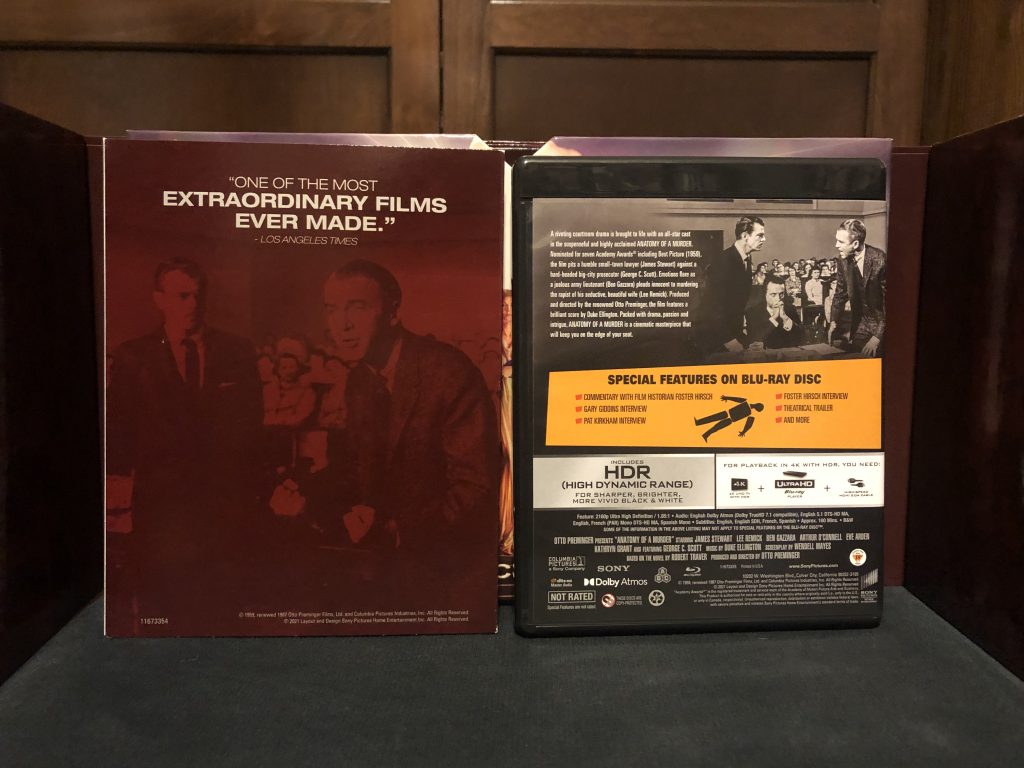


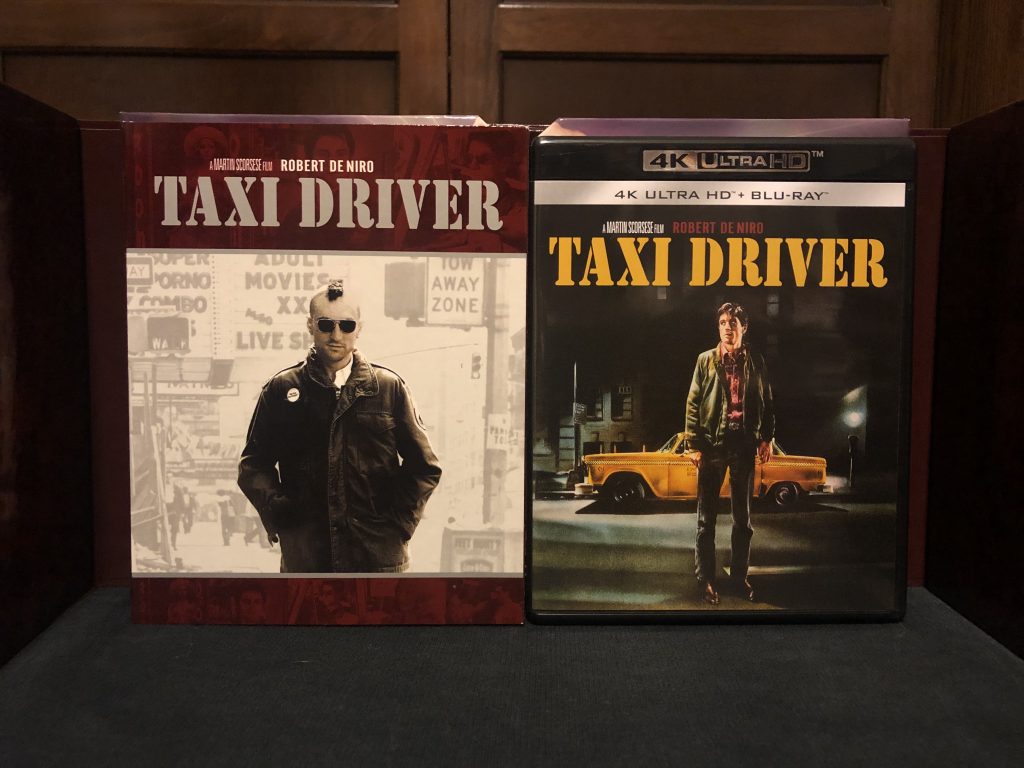
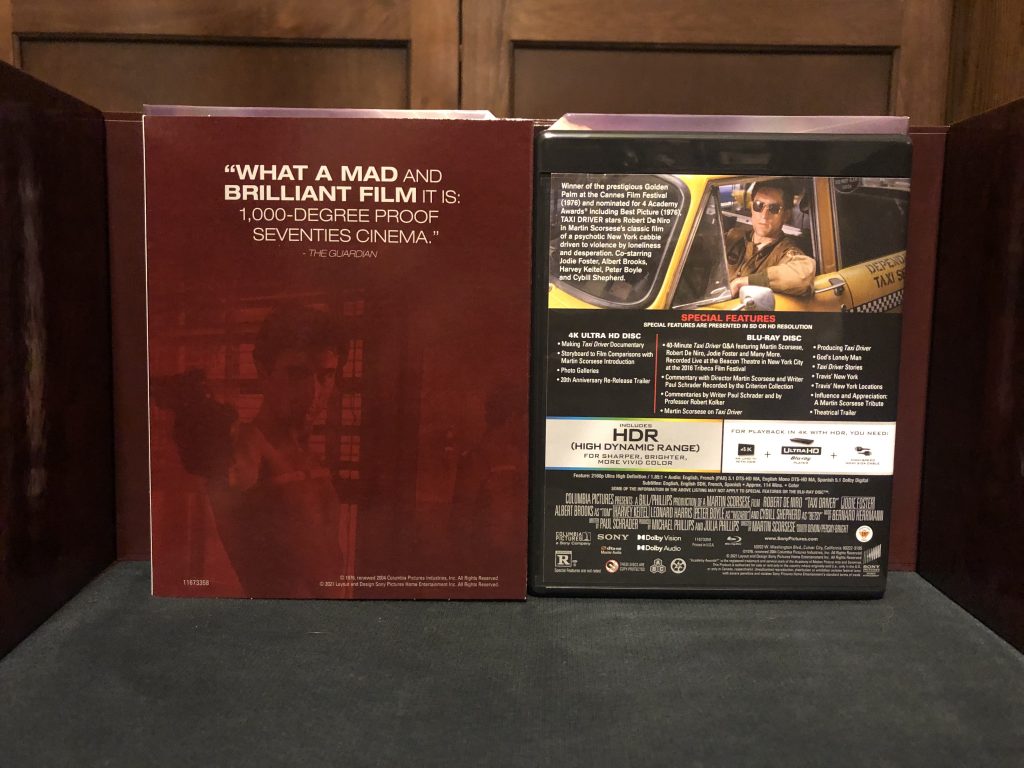
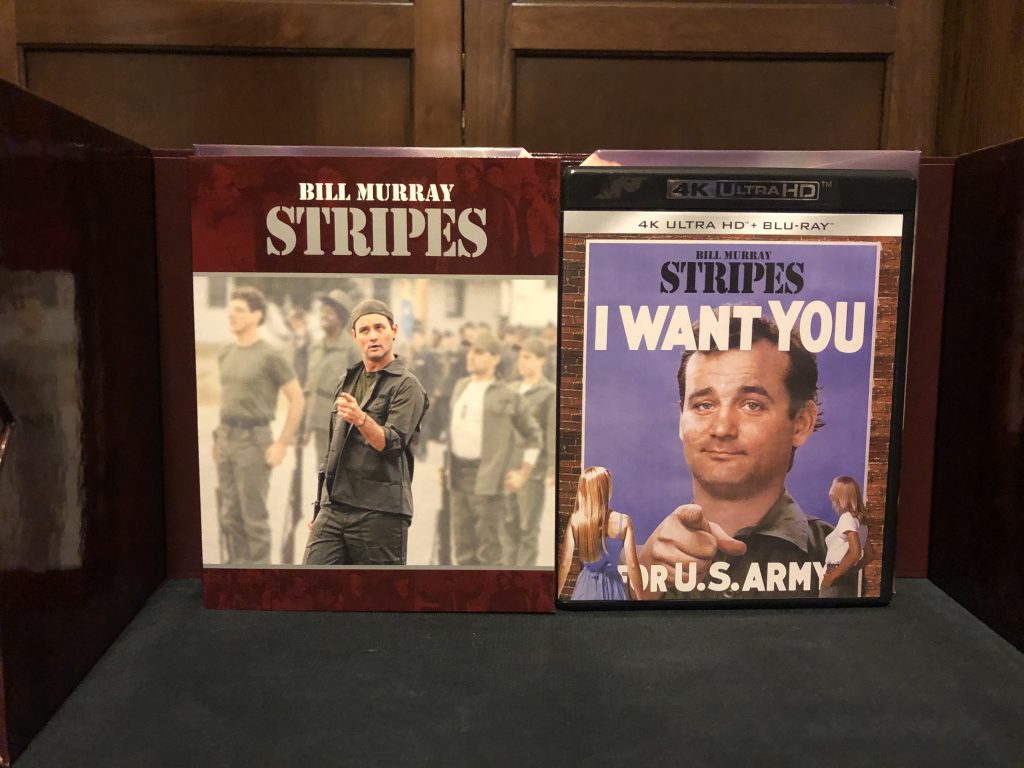

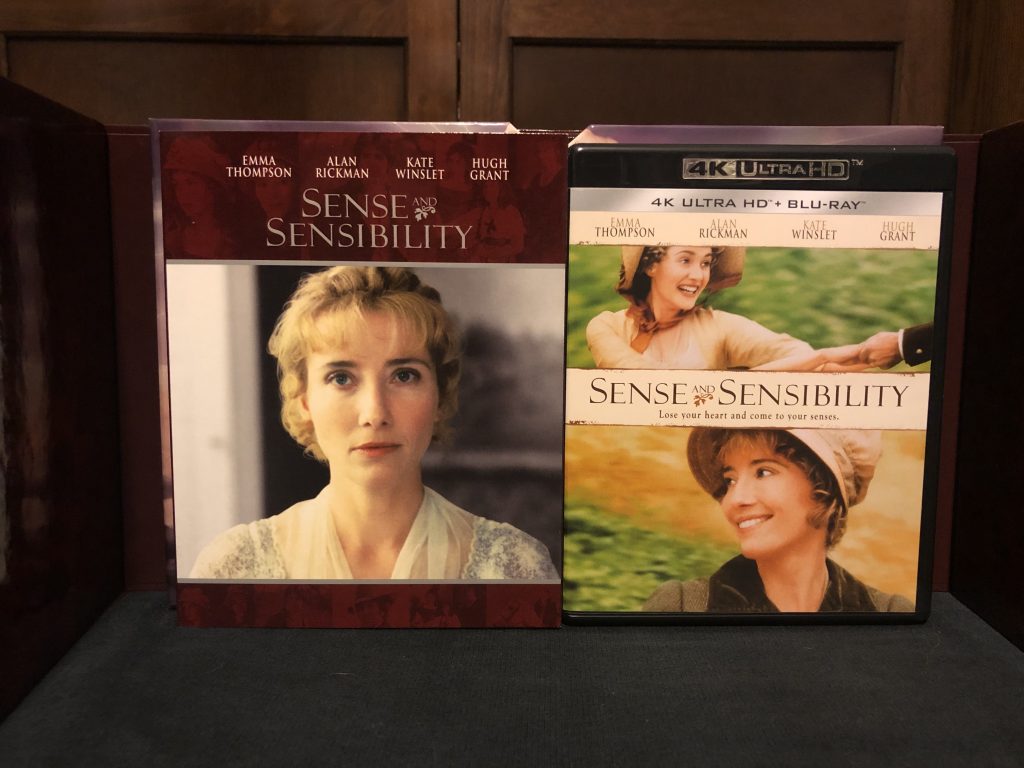


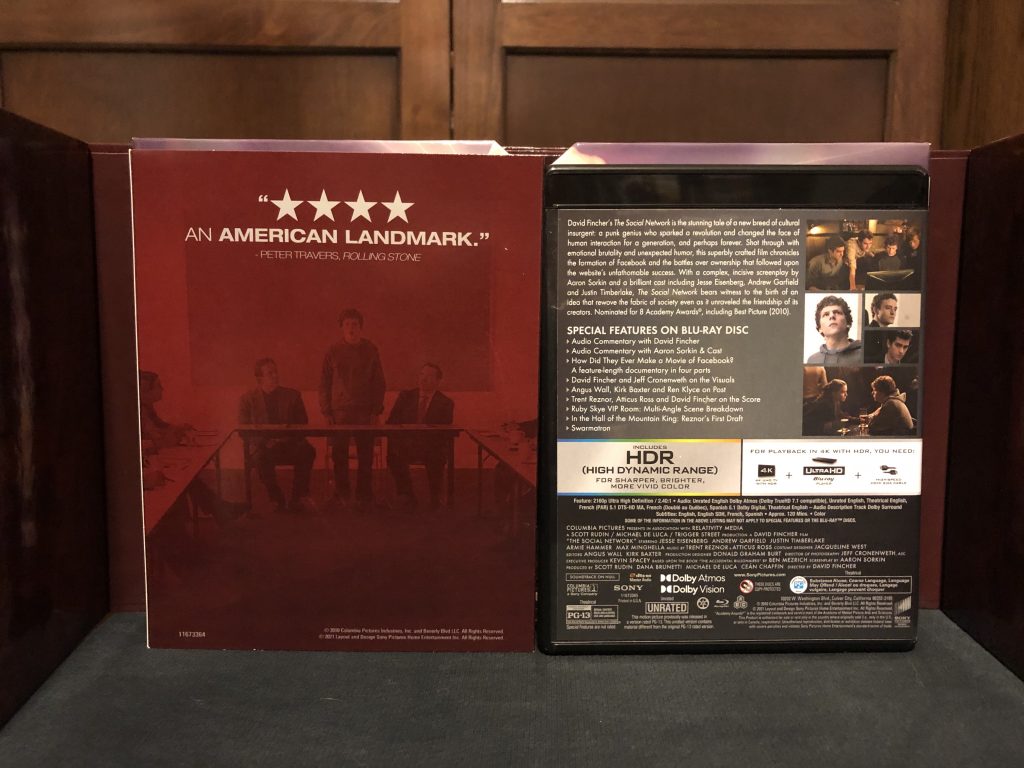

Dillon is most comfortable sitting around in a theatre all day watching both big budget and independent movies.


